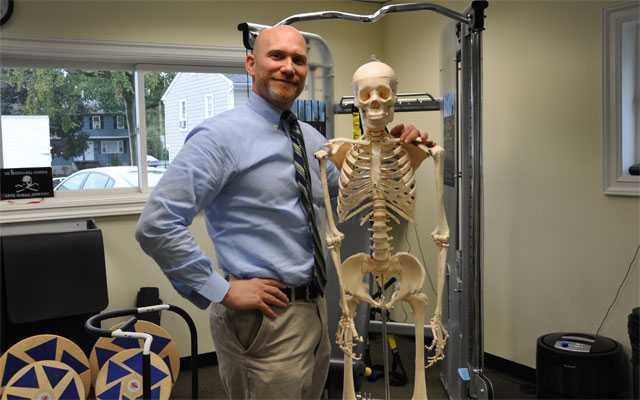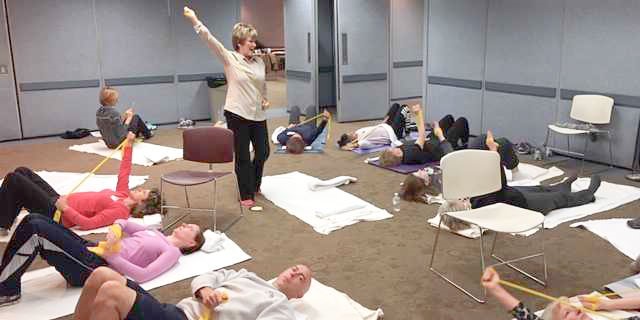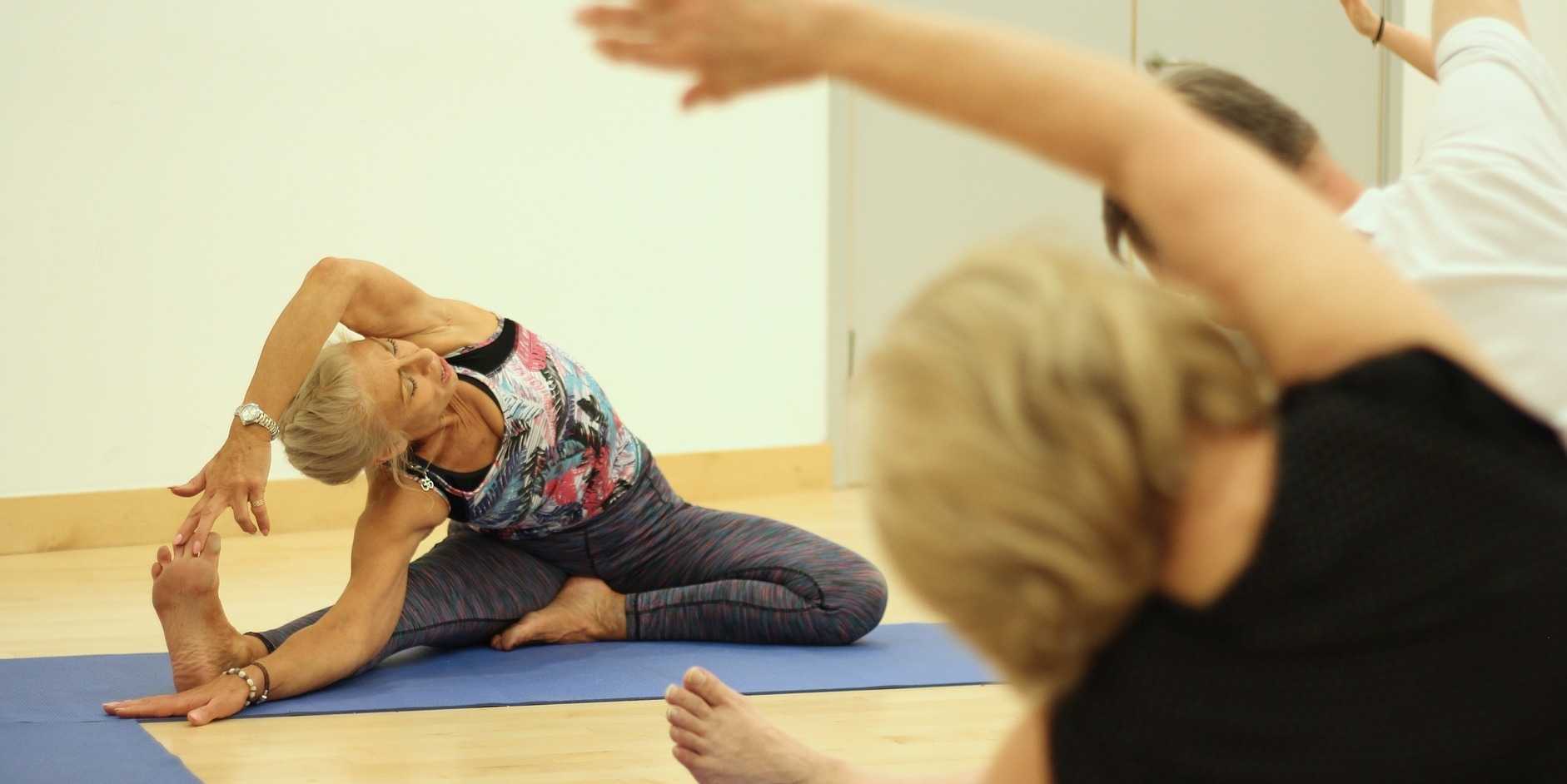For more than sixty years, Kegel exercises have been a common, albeit rudimentary, form of treatment to strengthen the pelvic floor. These exercises have become so omnipresent that the pelvic floor is commonly known colloquially as the “Kegel muscle.” Perhaps best known by the public for their ties to increased sexual function, Kegel exercises are often inappropriately considered the hallmark of pelvic floor wellness.
In a recent Chronogram article, titled “Could Your Pelvic Floor Use a Renovation?” Wendy Kagan describes the significance of Kegel exercises: “Today they’re a first-line defense against genital prolapse and urinary stress incontinence (i.e., leakage that occurs with jarring movements like coughing, jumping, or lifting). Dreaded by some, championed by others, Kegels are the pelvic equivalent of flossing—something most women know they should do, yet often guiltily do not do.”
The biggest problem with this article is that Kegels are not the “first line of defense”. Nor are they, necessarily, the best practice for everyone’s daily regimen. Prescribing pelvic floor strengthening without properly assessing the pelvic floor can be harmful for patients.
Kegels have become more popular in the public sphere. Popular exercise programs such as Yoga and Pilates often include Kegel exercises as part of their routines. Some have over-expressed the sexual benefits of Kegels. One hardly can open a Cosmo without finding an article on Kegel exercises for enhanced performance and pleasure during sexual activity. Furthermore, for men, Kegels have been prescribed as solutions for everything from erectile dysfunction to premature ejaculation. As popularity and awareness has grown, many have taken to performing Kegel exercises without speaking to a professional, which is never a good plan for benefiting one’s health.
However, the popularity of Kegels brings with it a public recognition that pelvic floor health is imperative and deserves to be cared for actively. Though not quite the silver bullet that Kagan’s article suggests, when properly recommended by a PT, Kegels, can be an important tool in treating patients. . As we examined in a past Pelvic Rehab Report: “Pelvic Floor Muslces: To Strengthen or Not to Strengthen?”, doing Kegels correctly is more than just tightening the muscles: “If a patient presents with pelvic muscle tension, shortening of the muscle, and poor ability to generate a contraction, a relaxation phase, or a bearing down of the pelvic muscles, how in the world will trying to tighten those overactive muscles bring progress?”
Herman & Wallace recently began developing a product to help therapists educate and treat patients on how to properly execute Kegel exercises. Check out “All About Kegels” to learn breathing techniques and exercises to help patients effectively build pelvic floor strength.
While many prenatal women practice yoga to stay healthy and fit during pregnancy, prenatal yoga is becoming a more and more popular tool to prepare women for labor. The topic of prenatal pregnancy was recently covered in the Welland Tribune. The article, titled “Prenatal Yoga Gets Women Ready for Birth,” follows Angela Sacco, a registered nurse and pre- and post-natal fitness specialist. Sacco has attended more than 100 births. Her eight-week program is specially-tailored to aid pregnant women as they prepare for giving birth.
According to Sacco, “Yoga in the delivery room, be it home or hospital, is meant to relieve pain, build confidence and make it all go quicker.”
Although the fitness benefits – enhanced strength, stamina, and flexibility – are significant, Sacco’s program’s greatest asset may be that it allows participants to understand the natural processes of child-birth. Furthermore, with this understanding comes vital confidence, intangible equally central to a successful labor.

This September, H&W will be offering a course on Yoga for the Pregnant Patient. This course is designed to teach therapists on how to safely recommend yoga prescriptions through each stage of pregnancy.
This November, Herman & Wallace is proud to bring our Differential Diagnostics of Chronic Pelvic Pain and Dysfunction to Orlando, FL! This three-day course is taught by Peter Philip, PT, ScD, COMT.

Pelvic Rehab Report sat down with Peter recently to talk to him about his course.
What can you tell us about this continuing education course that is not mentioned in the “course description” and “objectives” that are posted online?
There are many cause of pelvic pain! For instance, the pudendal nerve is often implicated as the sole source of pelvic pain, and this is simply not true. This course covers multiple reasons and nerves that can cause pelvic pain and dysfunction, and instructs participants on how to determine the exact tissue at fault when approaching patients with pelvic pain and dysfunction.
The course also covers the multiple factors and etiologies leading to the formation of muscle spasms, so that muscle spasms can be treated and, ultimately, eliminated.
At the course, the clinician will learn to determine the origin along the neuroaxis where his/her patient’s pain initiates, and - more importantly - how to specifically address and remedy the patient’s ailments.
The lecture portion of the course is based on applied anatomy and differential tissue tension. Lab sessions cover palpation strategies. After the course, there will be no more ‘guessing’ which and what structure is being palpated; the clinician will know.
The clinician will learn how to palpate, test and treat the anterior sacroiliac joint ligament, and learn its role in not only pelvic pain, but lower back pain as well.
The course also covers how to specifically test each sacral nerve, and to determine its contribution to the patient’s pain and dysfunction.
Using these techniques, I expect to have a positive impact on my patient population within three visits. The goal of my course is to teach other clinicians to do this for their patients too.
What inspired you to create this course?
My first patient with pelvic pain took his own life as a result of his persistent pain, and the secondary losses of career and relationships. This had a huge impact on me, and was coupled with a frustration that I felt because there wasn’t a means of accurately determining the exact tissue at fault in the initiation and perpetuation of a patient’s pain and dysfunction.
What resources and research were used when writing this course?
Over fifteen years of research and clinical experience went in to the development and formation of the content and information presented in this course. I drew from the orthopedic, neurophysiologic, urogynecologic and pathophysiologic practices and research and integrating these practices into a unified, progressive evaluation and treatment strategy.
Can you describe the clinical/treatment approach/techniques covered in this continuing education course?
The general concept is that every pain has a source. It is up to the clinician to determine what that cause is, and to formulate a treatment strategy that reflects and accurately addresses the tissue(s) at fault. In doing so, both the clinician and the patient will notice immediate resolution of pain, spasm and dysfunction.
Why should a therapist take this course? How can these skill sets benefit his/ her practice?
This course provides all clinicians with the opportunity to understand the entirety and complexity of the patient with pelvic pain, and dysfunction. The clinician will understand the role and interaction of the brain, spinal cord, spinal joints, sacroiliac joint, hip joints, ligaments of the spine and sacroiliac joint, and individual nerve roots have in the initiation and perpetuation of their pain and dysfunction.
This course is a must for clinicians who are eager to learn more about chronic pelvic pain and dysfunction. Seats are limited so register today!
For the last few months, Herman & Wallace's team of Item Writers have been plugging away at writing the questions and answers that will appear on the multiple-choice certification exam for Pelvic Therapy Practitioner Certification (PTPC). We needed 450 items in the item bank in order to move onto the next step of exam development, and are so excited to announce that, today, we hit 400 items! That means, we have only 50 items to go!
In August, our team of Subject Matter Experts will meet to go through the 450 items to edit them for clarity, accuracy and convention. This is one of the final steps (prior to beta-testing the items after review) before we launch the exam!
Once the first offering of the exam is announced, H&W will be making study guides and other materials available.
The PTPC exam will be multiple-choice and contain 150 questions. Questions will relate to pelvic floor dysfunction in men and women throughout the life cycle. The 150 questions will relate to 8 domains, based on the Test Blueprint created from the Job Task Analysis. The chart below lists the domains, the general percentage of content in the exam for that domain, and the approximate number of test questions pertaining to the given domain.
| Anatomy (15%) | 22 or 23 | |
| Physiology (20%) | 30 | |
| Pathophysiology (20%) | 30 | |
| Pharmacology (5%) | 7 or 8 | |
| Medical Intervention & Tests (5%) | 7 or 8 | |
| Tests & Measures (10%) | 15 | |
| Interventions (20%) | 30 | |
| Professional & Legal (5%) | 7 or 8 |
Those who want to start preparing can review their anatomy and physiology of the pevic floor. Herman & Wallace Pelvic Floor series courses will be the most relevant to the exam, but all courses offered by the Institute cover important aspects of pelvic rehab. Online courses are also an excellent way to review concepts, particulary Functional Applications of Pelvic Rehab Part A and Part B.
Be sure to review information related to pelvic floor in men and women of all ages, as this exam fills the void left by other specializations that focus solely on women's pelvic floor dysfunction, ilke the WCS exam offered by the APTA.
We are so excited to soon be finished with Item Writing and to move on to item reviewing next month. We are even more excited to be able to offer therapists the ability to distinquish themselves with PTPC to show their expertise in treating pelvic floor dysfunciton!
Fecal transplants have been in the medical news lately as the Food and Drug Administration attempts to standardize the procedure. The procedure is also known as a fecal microbiota transplantation, or FMT. If this is a new topic to you, here's how it works: a patient who has bowel dysfunction transfers stool from another personinto their own body. The burning question most people have when they first hear about this is: "How?" The transplantation can be completed, according to this Mayo clinic article, through a nasogastric tube, nasojejunal tube, upper tract endoscopy, colonoscopy, or a retention enema. Before you think you would never choose this procedure, consider the evidence and the dire consequences of severe bowel dysfunction. The evidence for cure or recovery from bowel dysfunction requiring hospitalization is as high as 90%. The potential consequences of severe infection or conditions such as colitis can include disability, colon removal, progression to cancer, or even death.
The most common indication in the literature at this time for a fecal transplant is chronic c-difficile infection, described in this MedScape article. People have even figured ways to DIY (do-it-yourself) when it comes to stool sharing. There is a website called the "Power of Poo" that is dedicated to increasing public awareness of the procedure. Clearly this is a topic that, if you have not yet heard about it from your patients or friends, you soon will. If you would like to learn more about the procedure, check out the links provided within this report, or click here for a great Q & A with Dr. Brandt about fecal transplants.
Herman & Wallace has also put together a comprehensive Prolapse/Colorectal Care resource for therapists treating fecal incontinence patients, complete with evaluation forms, patient questionnaires, and education materials.
Although exercise is critical for pregnant women (just as it is for everyone), few receive the appropriate amount of exercise. This may seem intuitive, but physical symptoms of pregnancy often are a barrier to physical activity for women.
A recent Research Report article published in The Journal of Women's Health - Physical Therapy, titled “The Impact of Symptom Type and Frequency on Activity Level During Pregnancy,” studying the daily records of physical activity for “sedentary women with a history of preeclampsia,” discusses how maternal weight and gestational age affect activity levels. For example, women who are already over-weight have lower activity levels during pregnancy. Similarly, the further along the baby is, the less likely the mother is to be physically active. Women, after week 28, have the greatest reduction in physical activity.
This is problematic because a healthy mom is crucial for both the health of the mother and the health of the baby. Furthermore, symptoms like fatigue and backache decrease among more active moms. Gestational diabetes and cardiovascular disease are less likely among active moms as well. Over-exercise can be detrimental as well; however, the numbers of women over-exercising during pregnancy is negligible compared to the majority, who are under-active during pregnancy. Often, these physiological problems persist after pregnancy.
Therefore, the challenge for therapists is to find a way to educate their pregnant patients about the importance of physical activity during pregnancy as well as give them advice on how to implement an active lifestyle within their daily routine. H&W recently expanded our courses on pregnant, peripartum, and postpartum patient care to help therapists when they treat these patients. Check out the following events on the horizon in the coming months:
Care of the Pregnant Patient
Winter Park, FL. Sept. 21-22, 2013
Despite the fact that millions of men and women experience pelvic floor dysfunction, it is often and incorrectly considered a “women’s health issue” and pelvic rehabilitation is often thought to be the province of Women’s Health physical therapists. Information about pelvic rehabilitation is often couched in language that revolves around perinatal and elderly female patients, while ignoring men, athletes, and teens.
For example, both male and female athletes can be frequent sufferers of pelvic floor dysfunction, as a by-product of the extreme stress high level performance takes on their bodies, often linked to sports hernia and femoroacetabular impingement.
This year, Herman & Wallace is introducing a new course which applies a sports medicine approach to treating the pelvic floor and core. Biomechanics of the Hip and Pelvis illustrates how understanding pelvic balance and manual movement therapy are integral to treating and preventing injury. This course is instructed by Steve Dischiavi, MPT, DPT, ATC, COMT, CSCS, who is the PT for the Florida Panthers hockey team and is applicable to treating all patients: from men to new moms, athletes to the elderly.
H&W faculty instructor, Stacey Futterman, PT, MPT, WCS, BCB-PMD, had this to say about Steve:
“I have known Steve for years and have tremendous respected for his orthopedic and sports medicine skills. After I took Steve’s course on how to implement the integrated sling systems, I developed therapeutic exercise programs for my clients that were more core and hip focused. I was amazed when I leaned how I could use the same theories Steve applies with his professional athletes to my pelvic and women’s health clients of all ages. It’s also a great course to understand body mechanics as it pertains to the hip and pelvis when applying it to exercise. Clinicians of all disciplines from sports medicine to women's health will enjoy Steve's a dynamic speaking style and wide knowledge base.”
Fellow H&W faculty instructor Pamela A. Downey, PT, DPT, WCS, BCB-PMD, said:
“Steve is an accomplished PT, works with high level athletes (the hockey team here the Panthers) and teaches in the t-DPT at NSU, where I have met him. He really understands the hip and trunk stabilization and is a manual therapist. He was a very effective speaker, with good labs, excellent slides and media pieces, and genuinely likes to teach.”
H&W is thrilled to be launching this brand new course in 2013. Don’t miss your chance to expand your skill set and approach – register today!
Pudendal Neuralgia (PN) is a neuropathic condition that causes patients to suffer chronic pain or numbness. Furthermore, PN is often accompanied by fecal incontinence, urinary incontinence, and numbness of the genitalia. Patients experiencing PN struggle with one of the most difficult nerve conditions and one that affects men and women alike.
Physical therapy has shown itself to be one of the few methods to successfully treat PN. However, few physical therapists have the knowledge, experience, and skills required. Recently, Greg Vigna, M.D., J.D. wrote an article for New York Injury News about pudendal neuralgia. In it, he describes the obstacles facing patients with PN:
"Historically the management of pudendal neuralgia was only available at a select few centers throughout the country. The reasons for this is that pudendal neuralgia was quite rare, often overlooked, and under diagnosed by the medical community. There are only a few doctors in this country who have received the advanced training in the management of this disorder. Even fewer have the advanced surgical training. A great number of physicians do not have a base understanding of the pudendal nerve and are unaware of pudendal neuralgia."
One of the reasons PN is so hard to diagnose, is that the most obvious symptom is intense pain while sitting. Patients associate the feeling with having a foreign body in your rectum or vagina. Men often feel pain while ejaculating or develop erectile dysfunction because of PN.
While women are twice as likely to suffer from PN as men, the condition affects people from all walks of life. PN was termed “cyclists syndrome” by French cyclists. Prolonged driving and sitting are also common causes. Young people who participate in sports, such as cyclists, runners, gymnasts, and horseback riders, also can be affected.
For women, PN frequently occurs immediately after childbirth. Sometimes, the symptoms are temporary. For others, the condition is not. Patients with PN notice symptoms of the condition throughout the day. As a patient’s day progresses, pain generally smarts as a patients activity level rises. These symptoms are often debilitating.
In August, Herman & Wallace will be offering a course on treating and assessing PN. Focusing on the pudendal nerve and pelvis, the course is designed to give medical practitioners the skills they need to rehabilitate those suffering from PN.
The course will be taught by Tracy Sher, MPT, CSCS and Loretta J. Robinson, PT, MS. Tracy is an accomplished pelvic and orthopedic physical therapist, who has presented for the International Pelvic Pain Society and the APTA’s Annual Conference. Loretta co-authored a paper on PN with Dr. Michael Hibner and has long been regarded as a leader in the field. Her practice exclusively serves men and women suffering pelvic dysfunction.
Are you guilty of treating the pelvic floor muscles without inspecting the tissues of the vulvar area or perineal area? A recent posting about clinical pearls by Institute faculty member and Pelvic Guru author Tracy Sher got me thinking about this dilemma. How can we avoid treating pelvic muscle trigger points when the patient has a medical condition requiring immediate intervention, and without which, the trigger points do not stand a chance of resolving? The larger picture is that all pelvic rehabilitation providers must be responsible for an increased awareness of medical issues, pelvic-related pathologies, and how to coordinate referrals.
Experienced therapists tend to have strong skills related to referrals and identifying conditions that require the eyes and ears of a medical provider. Less experienced therapists, in my observation and opinion, have the updated information about medical screening and multiple systems involvement, yet lack the clinical experience to develop an efficient pathway to referral and problem solving. What strategies can improve this issue?
Collaborate
There is much to be gained by the patient when therapists of varying experience level share information, and mentor each other. This requires some humility on the part of both therapists involved, and a huge effort on the part of the employing facility as well as the therapists who aim to find time to review charts, discuss difficult cases, or request that another therapist assess the complex patient. Many sites do not have more than one therapist. What about forming a local study group with the assistance of the the APTA Section on Women's Health, or simply contacting area pelvic rehab providers and doing a quarterly dinner and education session at neighboring clinics? The first response I usually hear is that therapists are in "competition" with these clinics, and that collaboration would be a negative thing. I reject that thought, professionally and personally, as there is plenty of pelvic rehab work to go around, especially with the lack of awareness within the community of our services. Check out this poignant blog post about collaboration.
Consult
Request the opinion of the referring provider whenever possible. Developing a strong relationship with providers is paramount to delivering excellent care. Physicians in this day and age are under severe pressure for being accurate and efficient, and when approached with respect, may develop a habit of seeking your opinion when the patient's condition is perplexing. Likewise, when you have a question or concern, he or she will create time to field the question. Is it possible to invite a referring provider to speak to a group of therapists, or to invite a provider to attend a pelvic rehab lecture with you?
Continue to Learn!
Take a course in medical screening. If you have not taken DPT level courses, what about taking an on-line course in the topic? Or purchase some of the amazing texts from authors including William Boissonnault or Catherine Goodman? Being able to ask the right questions or to communicate effectively about a concern can boost our confidence when contacting providers or when documenting concerns. (I still find myself saying things such as "....there is this odd bump located here and it feels like this...") yet if I can research some options for what that bump would feel like if it were a cyst, a lymph node, a hemorrhoid, etc, then I can discuss with more clarity the true concerns that I have.
Now back to the looking part. Sometimes, looking at the vulvar area or around the male genital area feels uncomfortable for either the therapist, the patient, or for both parties. This issue is the responsibility of the pelvic rehab provider to address. The phrase "fake it 'til you make it" comes to mind, because it is completely acceptable to simply take a deep breath, smile, and pretend to be a little more comfortable than you feel inside; the comfort level will come with practice. If your attitude is "I don't need to see what is going on," well, you are incorrect. What you might find is a lump, a rash, a cut, a bruise, an infection, a suspicious mole, pale skin, or a myriad of other things. A brief and thorough inspection (including under the scrotum or within the vestibular area) are crucial for the patient's wellness. It is possible that the provider has not seen what is going on due to lack of a complete examination or the time between provider examination and your examination.
How do we know what "normal" looks like? This is an area I think we can improve upon in general in pelvic rehabilitation. We are exceptional at education about the muscles, and nerves, and function, yet we might learn how to complete a pelvic muscle examination before learning what lichen sclerosis looks like. The integumentary system is considered to be the largest organ in the body, and if this organ lacks health, certainly the underlying muscles, connective tissues, and nerves can be affected. There are some very helpful resources for us in learning what dermatological conditions look like might affect a patient. Below I have linked some of them for you.
- Blog with link to resources about vulvar skin conditions
- A prior blog post with a link to a terrific article with images of common vulvar skin conditions
- Perianal images including surgical correction
- Images of normal and abnormal anal verge appearances
- Powerpoint available through google scholar with images of vulvar dermatology conditions
In February of 2012, Herman & Wallace founder and faculty member Holly Herman traveled to Riyadh, Saudi Arabia, where she educated the first class of 34 female physical therapists in the art and science of women's health physical therapy. She was accompanied by instructor and H&W friend Fatima Hakeem, PT. You can read more about that adventure here.
Following this intensive 11-day seminar in Riyadh, she returned to the Middle East last Decemeber to teach a similar intensive seminr in Dubai, UAE. You can read more about this trip here.
This winter, Holly will return to Riyadh to teach a six-day intensive offering of Herman & Wallace's Pregnancy and Postpartum series of courses. This course will be targeted towards female physios in the region and will be the first of it's kind.
Stay tuned to Pelvic Rehab Report for more updates on our international travels!
By accepting you will be accessing a service provided by a third-party external to https://hermanwallace.com./












































